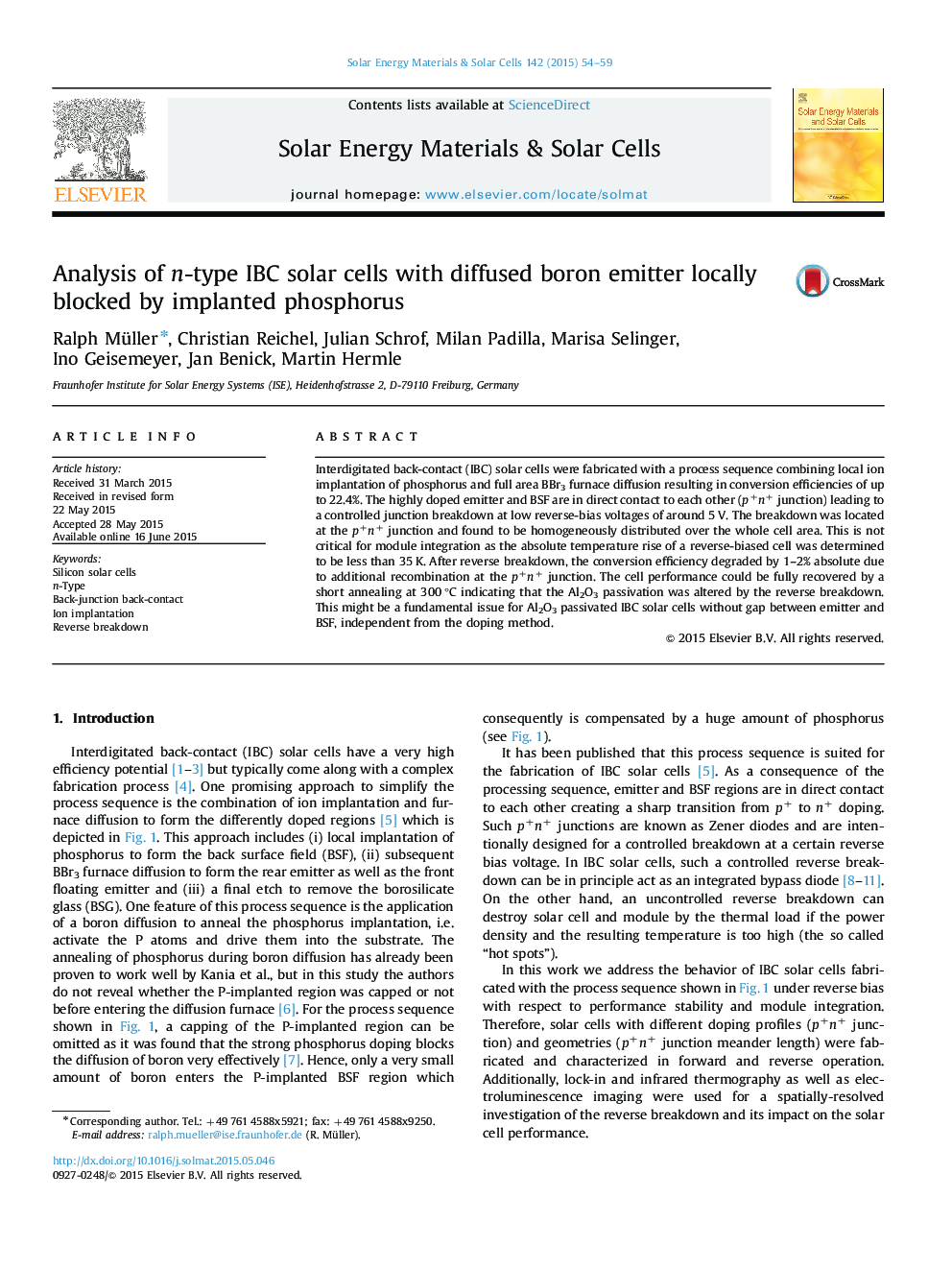| Article ID | Journal | Published Year | Pages | File Type |
|---|---|---|---|---|
| 77798 | Solar Energy Materials and Solar Cells | 2015 | 6 Pages |
•Novel simplified process sequence for the fabrication of IBC solar cells.•Synergistic combination of ion implantation and furnace diffusion.•Investigation of reverse breakdown for IBC solar cells without gap.
Interdigitated back-contact (IBC) solar cells were fabricated with a process sequence combining local ion implantation of phosphorus and full area BBr3 furnace diffusion resulting in conversion efficiencies of up to 22.4%. The highly doped emitter and BSF are in direct contact to each other (p+n+ junction) leading to a controlled junction breakdown at low reverse-bias voltages of around 5 V. The breakdown was located at the p+n+ junction and found to be homogeneously distributed over the whole cell area. This is not critical for module integration as the absolute temperature rise of a reverse-biased cell was determined to be less than 35 K. After reverse breakdown, the conversion efficiency degraded by 1–2% absolute due to additional recombination at the p+n+ junction. The cell performance could be fully recovered by a short annealing at 300 °C indicating that the Al2O3 passivation was altered by the reverse breakdown. This might be a fundamental issue for Al2O3 passivated IBC solar cells without gap between emitter and BSF, independent from the doping method.
